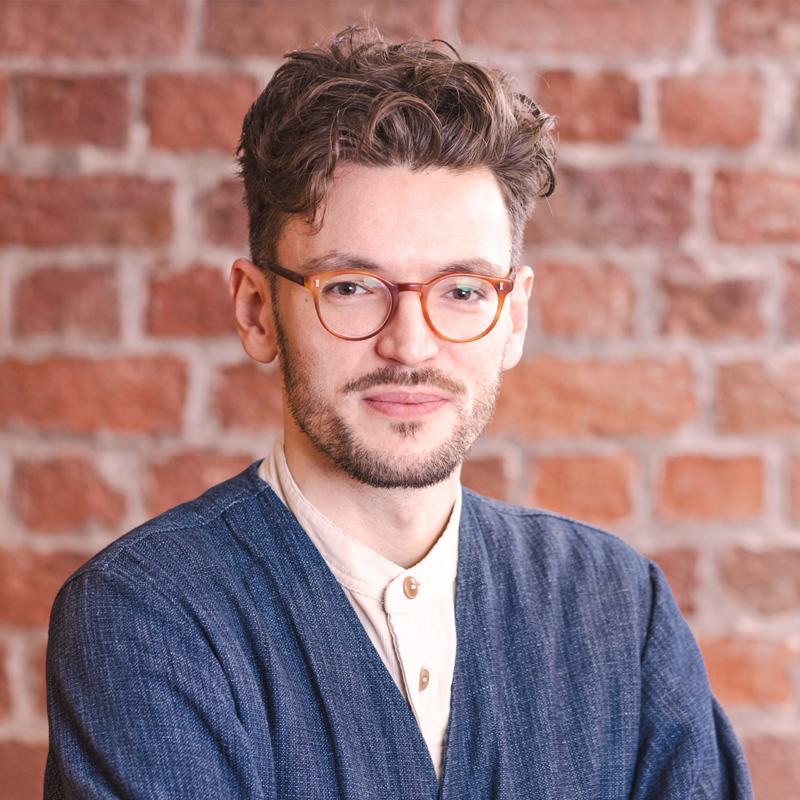
Sustainability needs to be an inherent part of the process
Written By
The Davidson Prize
04.03.2024
We spoke with Alexander Turner, Founding Director of Studio MUTT, about centring sustainability throughout the design process and the importance of physical models.
What will you be looking for as a judge of the 2024 Davidson Prize?
In general, it feels important that the proposed solutions are grounded in a level of reality so that they have the potential to be seeds for growth after the competition and offer the teams potential to start conversations with councils, communities, landowners, families and so on.
If you were Housing Minister for a day what single measure would you put in place to start tackling the housing crisis?
Being the housing minister would have layers of complexity and red tape, but I would firstly say that I don’t believe there is one solution to the housing crisis. However, as a starting point, I would give each council dedicated funding to bring back in-house design teams. Obviously I would say this as an architect, but I believe analytical and critical thinking are consistent in the approaches and processes developed by architects and designers and missing from many conversations around development and construction. This expertise could help the situation in planning where blockages and backlogs of applications need to be undone, land and redundant building stock needs to be unlocked and existing housing needs to be improved. Encouraging this collaboration will bring forward more analytical and proactive thinking which will lead to more sustainable long term solutions.
The introduction of design professionals is beginning to happen through the good work of the Public Practice programme however, one person per council will have its limits. More support and dedicated teams are needed, which can only be achieved by dedicated funding.
Is there an example of residential adaptive reuse that really stands out to you, and why?
Sergison Bates Architects recently spoke about their work on the refurbishment of a former car factory in Brussels. Paraphrasing John Hedjuk, they stated how "The house never forgets the sound of its original occupants”. This statement stood out to me as a way of thinking about refurbishment works. It emphasised the importance of allowing the history of a building to show through as a layer on which the new layer is placed. A feeling of familiarity is created by the choice to express the layering of a building's history. It feels comforting for a building to communicate its life through its scars and imperfections, maybe this is because it's something that we can all relate to in our lives. This dialogue between the new and old creates an atmosphere that is richer than that of a new building, which is why for me, projects that express these histories are the most surprising and fulfilling to experience.
In terms of examples, the work of Lacaton & Vassals, winners of the 2021 Pritzker prize, really stands out for me. Sala Beckett by Flores I Prats should also be mentioned, for the sculptural recrafting of an old cooperative grocery and community center beautifully cut and carved to create a new theatre and drama school.
The Davidson Prize is all about the communication of brilliant design ideas. What scope do you see for better communication of architectural ideas and intentions to wider audiences as the digital era evolves?
For us nothing beats a physical model. From the making of it in the studio as a design tool to placing it on the table at a design team or client presentation - it proves its worth.
The physical presence of a model, its materiality, the way daylight moves through it, are all truths and realities that cannot be truly experienced in a virtual world. Even in a digital submission, a set of model photographs still give and describe the ideas more than glossy computer renders.
Other than this we have found that the use of film has been a powerful tool to capture the intended atmosphere and narrative of a project. We tend to use a collaged approach to film, that normally consists of found and made content being cut together to describe a project's context, history, programme and atmosphere. When we have shown the films to our clients, we have found that its easier for them to engage with and understand the conceptual ideas of a project. It leads to more open discussions and fruitful outcomes.
What alternative sustainable building material is most exciting/stands out the most to you?
There isn’t one material that stands out to me. In our teaching unit at the University of Liverpool, we try to make it clear to our students that sustainability is not a page explaining that the kitchen worktop is made from recycled plastic or the floor is made from ground up coffee beans. It needs to be an inherent part of the process rather than a ‘bolt on’ that will no doubt be removed due to changes in fashion or requirements.
I believe that the question of what makes a material sustainable should be defined by the particular conditions of each individual project - its location, lifespan or use will set constraints for what materials can be sourced locally or what existing materials or elements can be reworked and re-used.
In turn, we feel that new buildings should be thought of as material banks for the future, they should be designed to be a solution to their specific requirements, have a material presence, be robust, age gracefully, and be adaptable enough to consider future uses without large amounts of demolition.